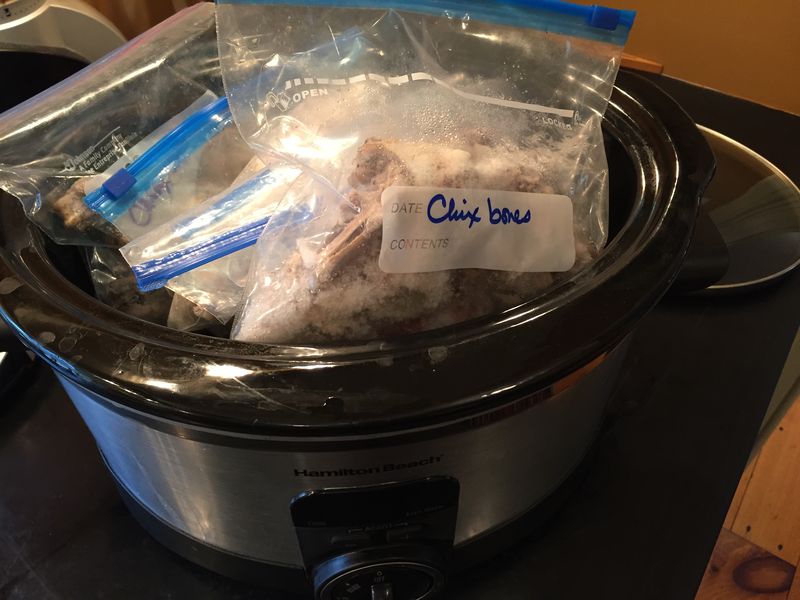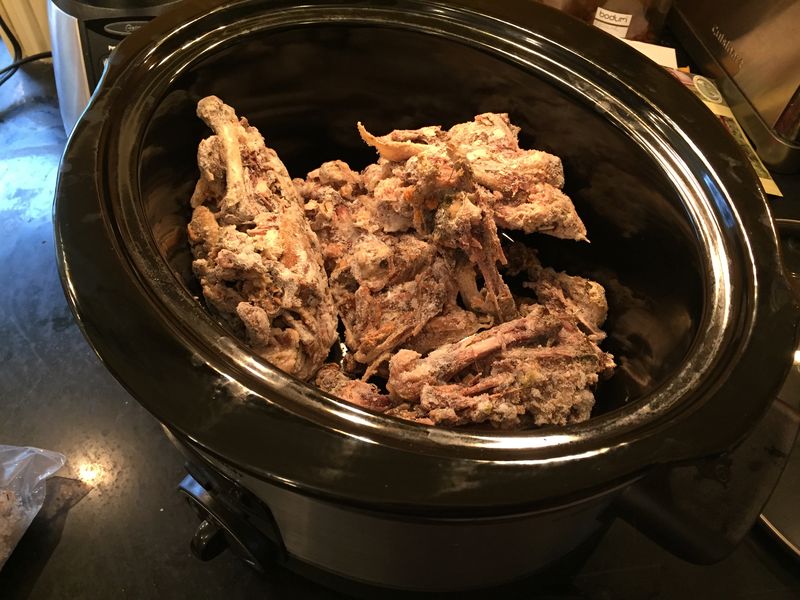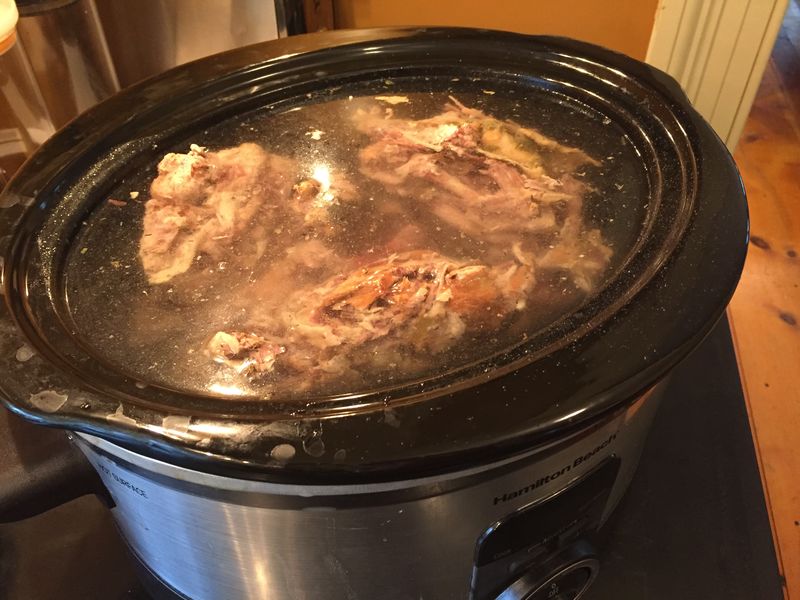Making Chicken Bone Broth
You can make your own broth. It is not hard. In fact, you really should consider making this one change to your cooking habits, if nothing else: make and use your own bone broth.
“Bone broth is one of the best foods you can feed your body and...it is hands down the easiest nourishing food to make in your kitchen."- Katie at Kitchen Stewardship
After enjoying a nice dinner of braised bone-in chicken, or maybe just a rotisserie chicken, save all of those bones and bits. Gather every speck of bone, cartilage, skin, and stray bits - including those left on dinner plates! If you only have a small amount, toss them in a zip lock or other container in the freezer until you accumulate enough to fill at least the bottom of your slow cooker.
Instructions
When you are ready, toss all of those bones and bits into a slow cooker and then fill the pot with cold water. If your chicken came with “giblets", throw them in too! (All except the liver, which makes broth bitter. Give that to your favorite dog/cat, make “dirty rice", fry and eat, or toss it.)
If you have some cut off ends of veggies, such as the dark green ends of leeks, or onion peels, or something almost past edible, rinse and throw those in too for flavor and vitamins. (Once you try broth-making, you will almost certainly want to start saving the cut-off ends of veggies, and bones from all your meat in the freezer. This is the time to pop these frozen veggie ends and chicken bones into the crock pot as well.)
Add a couple of tablespoons or so apple cider vinegar to the water and bones, and let it sit for an hour.
Then turn the pot on to low and go to bed.
Your house will smell amazing for the next couple of days while it simmers. During this time, add water occasionally, and skim off and toss fat, any foam, and anything that looks yucky and floats to the top, using a spoon. At some point on the second day, try breaking open your bones to expose the marrow, and let that get into the broth.
At the end of two days, you will have crock pot mostly full of incredibly good stuff.
Allow it to cool, and then ladle through a sieve into glass jars for the fridge (for the next couple of days), or in 1-2 cup portions into labeled/dated small freezer bags (zip locks) to freeze.
And finally, the reason we did all this [not very] hard work: USE IT! Replace part or all of the water called for in cooking rice, lentils or quinoa, or use it as a base for a sauce/gravy, or my favorite: make chicken soup with it, using leftover chicken and veggies from that braised chicken dinner. (This is our household favorite dinner.) Just run the zip lock bag under warm water for a moment, and then dump your frozen chunk of goodness into the cooking pot.
I hope that this inspires you!



comments powered by Disqus